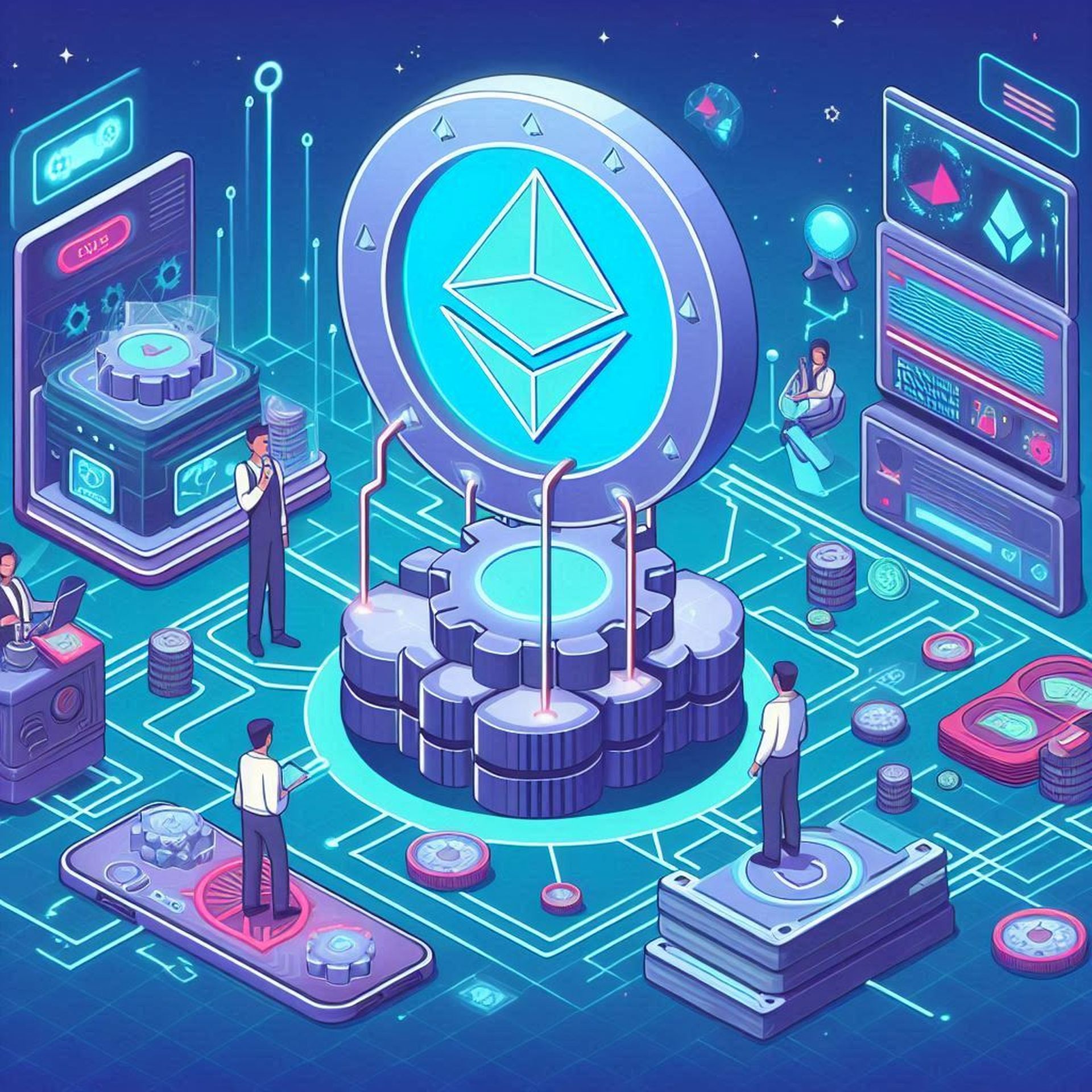For anyone who’s operating at the intersection of AI and blockchain, be it for investment, research, or deployment purposes, the name HyperCycle should be familiar. The platform, which aims to optimize computation, has been at the vanguard of the Web3 movement to leverage the vast potential of artificial intelligence.
But while anyone is free to participate in the AI revolution that’s rapidly gathering pace, not everyone knows how. As with all tech-driven systems, there’s a degree of complexity involved that can prove daunting to the uninitiated. That’s why the release of HyperShare, a “wizard” for automating node deployment on HyperCycle has been greeted so enthusiastically.
HyperShare lowers the barrier to entry while making it easier for all participants – be they newcomers or seasoned pros – to get skin in the game without spending hours bogged down in terminal prompts. While it may be a stretch to describe it as a game-changer, HyperShare is a major advancement in democratizing AI access.
Catching a ride with HyperCycle
HyperCycle is in the business of making it easier for AI machines to interact with other AI machines as quickly as possible. Why? Because artificial intelligence is a $300B industry that’s projected to usher in the greatest revolution since the internet, for one thing, but on a more practical basis because AI is a technology whose intelligence is reliant on connectivity. The more machines you connect, the stronger the “global brain” and the better the outcomes for everyone.

HyperCycle supports a number of use cases, like allowing AI developers to deploy their algorithms on a decentralized network and reap the rewards. In return, consumers, such as a business that requires an AI to run specific tasks, can choose the model they desire at a competitive price.
The blockchain component that projects such as HyperCycle utilize is important here: it ensures that there’s no central party pulling the strings. Instead, all participants – AI developers, consumers, and tech entrepreneurs – are able to interact and transact freely. This allows AI innovation to flourish and, crucially, supports a robust economy in which usage isn’t metered and users aren’t tied in to fixed contracts or subscriptions.
That, in essence, is the case for blockchain’s convergence with AI and for HyperCycle in particular. Now it’s time to talk HyperShare and specifically why it’s such a big deal for users of HyperCycle’s decentralized network.
Node management made easy
HyperShare makes it easier for network users to manage their activated node in a true P2P environment. Which is a sentence that makes perfect sense if you’re a HyperCycle power user who’s been there from the start, but will mean little to beginners. So let’s walk it back a little and delve into the function and benefits of this service.
Anyone is free to set up a node and generate revenue from becoming part of the AI computation network that HyperCycle forms. But as noted earlier, the act of spinning up a node and maintaining it has entailed a degree of technical sophistication up until now. HyperShare fixes that, making it much easier to become part of the HyperCycle network and start reaping the rewards. As a “wizard,” HyperShare guides users through the stages required to become an active network node and to assign licenses to multiple parties if desired.
At present, anyone can own a node on the HyperCycle network and control it unilaterally or split ownership among multiple parties. The owner of a single node requires 1024 tokens while the owner of a masternode has a maximum of 512 licenses they can allocate which requires a total of 524,288 tokens. Each of these nodes, regardless of their level, earns money by performing computational tasks.
HyperShare in action
HyperCycle announced the launch of HyperShare in a lengthy blog post and accompanying video tutorial. The process essentially runs like this:
First, the user connects their web wallet, navigates to HyperCycle’s licenses dapp and views all of the licenses that are available to them. These are used to run nodes on the network. They then convert HyPC.ETH into the Native HyPC token which is an NFT. This is a representation on Ethereum and is required to create a HyperShare.

HyperShare has been described as a marriage certificate merging the user’s HyPC and their license. After creating a HyperShare, it will appear in the list of available licenses within the HyperCycle dapp. Provided the user has enough HyPC to undertake conversion, the HyperShare wizard will handle this for them. All the user has to do is follow the steps and approve the transactions in their Web3 wallet.
With this step completed, the user will now have successfully created an identity on the network. The final step is for this to be deployed to a node, whereupon they’ll be up and running on the network and able to start earning rewards for participating in AI computation provision.
Aside from providing a helpful wizard for quick node setup, HyperShare introduces S-tokens. These correspond to the number of HyPC the user deposited to create a share, allowing for the creation of partial shares. It’s possible to assign partial ownership to other parties by distributing S-tokens and running a node allows the operator to unlock more nodes over time.
HyperShare also utilizes one other token type: R-tokens. These are revenue tokens that handle automatic revenue distribution from node operation, allowing the operator to distribute earnings to all stakeholders involved in running the node. There are also a few other new features that debut with HyperShare, like the ability to start tilling in the cloud, but that’s a conversation for another time.
Why share with HyperShare?
With AI being such an abstract concept, it can be hard to visualize exactly what’s taking place when someone uses HyperShare to set up a node and invite multiple parties to own licenses for it. Imagine an individual who acquires one license (with 1024 HyPC ERC20 ETH tokens) using the HyperShare wizard to create and deploy a HyperShare on their personal computer
Once this combination node announces to the network that it is open for business, it can begin to establish a reputation for availability. As other nodes use this individual’s node for computation tasks, its performance score will increase, leading to a process of splitting. Initially, one node contains one license and 1024 HyPC. As the score rises, it splits into two nodes, each with 512 HyPC, continuing until there are 1024 individual nodes capable of performing separate tasks. Each of these nodes, regardless of their level, will earn money by performing computational tasks.
While users are likely to have their own motivations for connecting to HyperCycle and setting up their own node with the aid of HyperShare, some will be attracted for more ideological reasons. As HyperCycle PR Officer, Jerry V Hall explains, “Longer term, we are embarking on a journey to safeguard humanity from centralized AGI, for which there seems to be very little opposition forming at present. Ultimately, the more agents and AI that exist and transact on the network, the smarter they all collaboratively become, and our hope is that we are on the path to creating the first truly P2P decentralized AGI.”
It’s too early to tell when this big picture vision will come into sharp focus. But in the here and now, this much can be said with confidence: entering the world of HyperCycle and jumping aboard the AI juggernaut is no longer daunting thanks to the wizard automation provided by HyperShare. It’s a giant leap for HyperCycle and a step forward for artificial intelligence.
Featured image credit: julien Tromeur/Unsplash
- SEO Powered Content & PR Distribution. Get Amplified Today.
- PlatoData.Network Vertical Generative Ai. Empower Yourself. Access Here.
- PlatoAiStream. Web3 Intelligence. Knowledge Amplified. Access Here.
- PlatoESG. Carbon, CleanTech, Energy, Environment, Solar, Waste Management. Access Here.
- PlatoHealth. Biotech and Clinical Trials Intelligence. Access Here.
- Source: https://dataconomy.com/2024/06/04/understanding-hypercycles-automated-smart-contract-feature-hypershare/



